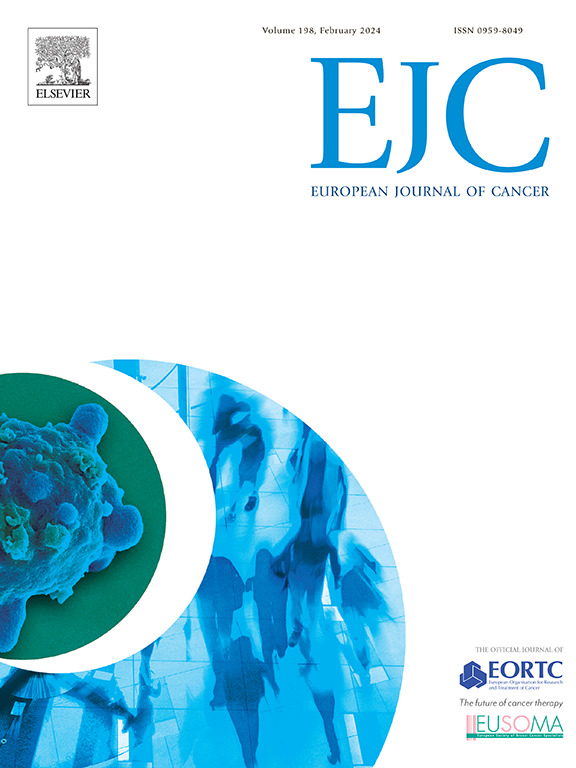Survival outcomes for patients with invasive lobular cancer by MammaPrint: Results from the MINDACT phase III trial
IF 7.6
1区 医学
Q1 ONCOLOGY
引用次数: 0
Abstract
Background
Evaluation of the prognostic performance and clinical utility of the MammaPrint 70-gene signature in early-stage invasive lobular carcinoma (ILC) for whom such analyses in a randomized trial is awaited.
Patients and methods
Exploratory subgroup analysis of MINDACT trial patients with centrally assessed histology (n = 5929) with invasive breast cancer of no-special-type (NST), or pure ILC. In the trial patients were categorized based on the 70-gene signature for genomic risk and modified Adjuvant!Online for clinical risk. Survival outcomes at 8.7 years median follow-up by 70-gene signature were compared between NST and ILC for Distant Metastasis-Free Survival (DMFS), Disease-Free Survival (DFS) and Overall Survival (OS).
Results
5313 patients were ILC (n = 487) or NST (n = 4826). ILC was further classified into classic ILC (n = 255) or ILC variants (n = 232). The 70-gene signature classified 16.2 % of ILC and 39.1 % of NST as genomic high-risk (gH). Survival outcomes for ILC vs. NST revealed similar estimates according to genomic risk overall and across subsets. The 70-gene signature classified 10.2 % of classic ILC and 22.8 % of ILC variants as gH. 5-yr DFS estimates for ILC variants 88.4 % (95 %CI: 83.1–92.1) was inferior to classic ILC 93.0 % (95 %CI: 88.7–95.7).
Conclusions
Sixteen percent of ILC were classified high genomic risk by the 70-gene signature, with unfavorable survival outcomes. Survival estimates were similar for patients with ILC and NST classified as either low- or high-genomic risk, suggesting that the 70-gene signature also has prognostic value in ILC and may be a clinically useful tool for adjuvant treatment decision-making in ILC.
求助全文
约1分钟内获得全文
求助全文
来源期刊

European Journal of Cancer
医学-肿瘤学
CiteScore
11.50
自引率
4.80%
发文量
953
审稿时长
23 days
期刊介绍:
The European Journal of Cancer (EJC) serves as a comprehensive platform integrating preclinical, digital, translational, and clinical research across the spectrum of cancer. From epidemiology, carcinogenesis, and biology to groundbreaking innovations in cancer treatment and patient care, the journal covers a wide array of topics. We publish original research, reviews, previews, editorial comments, and correspondence, fostering dialogue and advancement in the fight against cancer. Join us in our mission to drive progress and improve outcomes in cancer research and patient care.
 求助内容:
求助内容: 应助结果提醒方式:
应助结果提醒方式:


